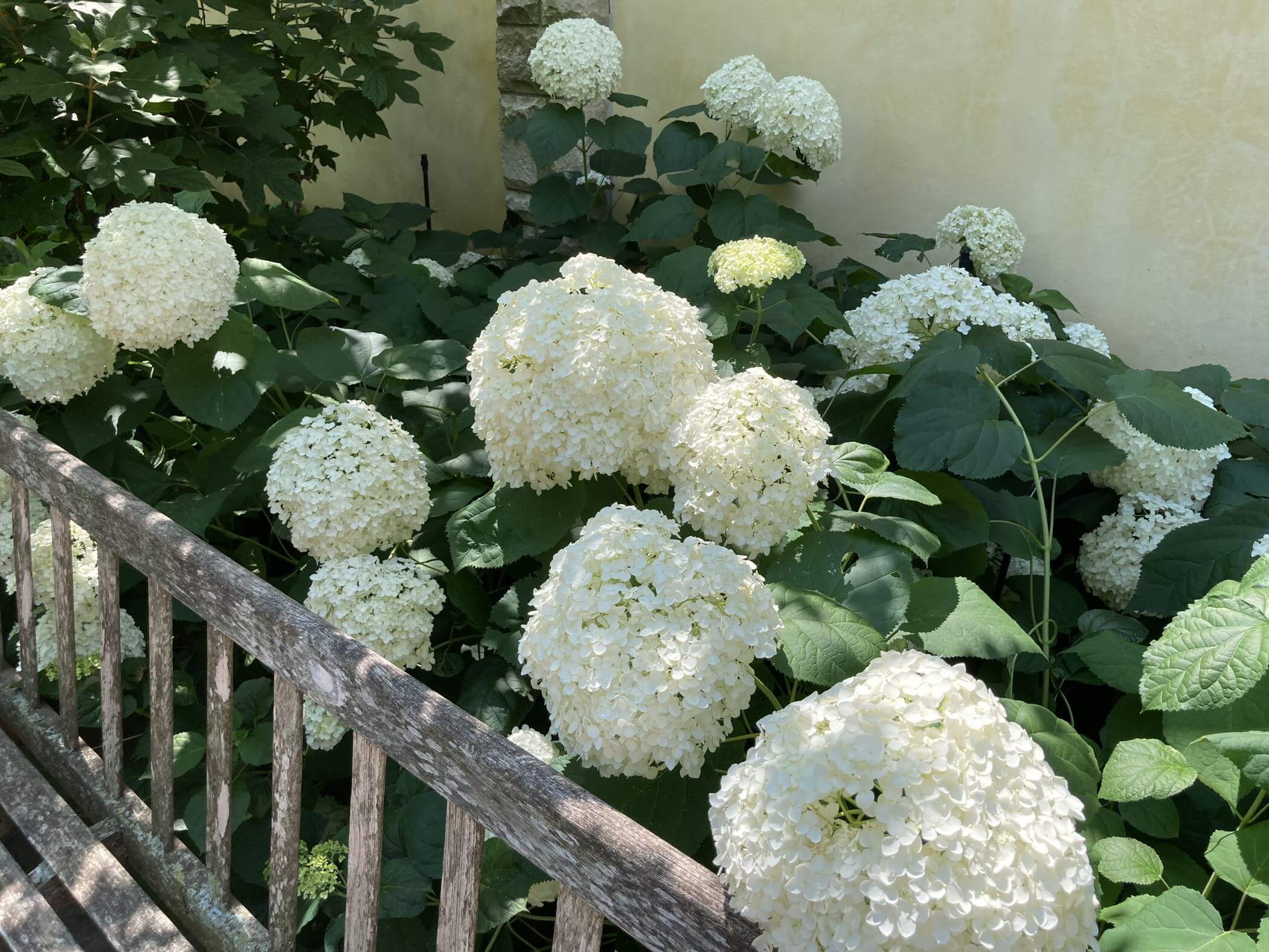
Has the heat got you inside looking out? Are you enjoying gardens and landscapes only from the comfort of your air-conditioned car? Indeed we are in the throes of summer in Georgia, but even though it’s brutal for us outside, there are many landscape plants that are in their glory this time of year.
Shrubs
While there are a variety of beautiful shrubs in our Georgia gardens this time of year, a few really steal the show. Panicle hydrangea (Hydrangea paniculata) takes my breath every time I see it. This hydrangea’s large, showy blossoms are mostly white. You’ll find a few pinkish variations with some cultivars like ‘Vanilla Strawberry’, though the blossom color is not sensitive to pH changes like other hydrangeas. These varieties not only offer stunning displays in the peak of summer heat, but they produce abundant flowers that are fun to cut and bring inside. This hydrangea is a reliable plant that endures the sun and heat better than other hydrangeas.
This summer has had enough moisture for the smooth hydrangea (Hydrangea arborescens) to offer a delightful show. Considered a native of the Eastern U.S., this showy shrub sports large, velvety leaves and chartreuse-to-white blooms. Several cultivars are available on the market. I have been struck speechless by the size of blooms on ‘Incrediball’ and am charmed by the pink hues of cultivars like ‘Invincibelle’. While these plants are simply stunning this time of year, remember that they prefer partial shade and moist soils.
Sweet pepperbush (Clethra alnifolia) is also a gem in the July garden, and our pollinators couldn’t agree more. Clethra is also native to the Eastern U.S., adapted to our warm and humid summers. While you can grow Clethra in the full sun, it’s commonly found in moist, swampy soils. It is a great plant to grow on the edge of trees, where it will benefit from some shade. I am enjoying the light fragrance from its white flowers born on upright panicles.
If you are looking for more color variations, be sure to consider abelia (Abelia hybrids). There are many different cultivars on the market offering a variety of mature size, leaf color and bloom color. Choose from a spectrum of green leaves or plants with white, cream, chartreuse, yellow-gold and pink variations. While many abelia have a classic white bloom, some have blooms in shades of pink and purple. Abelia does well planted in the sun, and its summer blooms offer nectar for many insects.
Trees
.jpg)
When summer hits its stride, a few trees distinguish themselves in the landscape. Among them are crape myrtles (Lagerstroemia) and chaste tree (Vitex spp.). Crape myrtles have long been valued for their tolerance of poor soils and heat, so they are often used in streetscapes. These trees are available in a variety of heights, green and dark purple foliage, and blooms in white, pink, lavender and many shades in between. An added bonus is the bark of this tree. When a crape myrtle gets some age to it, its bark begins to curl and flake off in a way that makes me think of cinnamon sticks. Some cultivars have contrasting bark colors, adding to their appeal, especially apparent in winter when their leaves drop.
Chaste tree (Vitex agnus-castus and V. negundo) are great trees for the summer garden as well. It has distinctive compound leaves with lance-shaped leaflets and its flowers range from violet blue to lavender depending on the species. My mind often tricks me into thinking, “Oh, look at that lavender!” when these are entirely different plants. Still, the visual effect is the same and our insects appreciate having chaste trees in the garden. Be sure to give these small trees plenty of space for their 15- to 20-foot height and shrubby nature.
Perennials
As I take another look around the garden this time of year, a few perennials tend to catch my eye. These are plants that reliably regrow from their roots each year but die back in the winter. A few that show off their blooms in the hot July summer include Montbretia (Crocosmia hybrids), a plant growing from underground corms. They are available in a variety of reds, oranges and yellows, and make good cut flowers. Black-eyed Susans (Rudbeckia fulgida) and coneflowers (Echinacea purpurea) are respectively showing off their signature yellow and purple blooms. I also enjoy the tropical flowers of pineapple lily (Eucomis comosa) and the sweet blossoms of blackberry lily (Iris domestica), so named for their seeds that look like blackberries and appear in the fall.
If your summer garden doesn’t sparkle to your liking, you might consider some of these plants to add to the year-round appeal of your landscape. While it’s blazing hot outside now, the good news for your garden is that fall planting season is just around the corner! Make plans to add a few of these summer beauties to your garden.
For additional information on the shrubs and trees listed in this article, be sure to check out University of Georgia Cooperative Extension publications on woody shrubs and groundcovers, trees, annuals and perennials. You may even want to get a copy of the Georgia Master Gardener Handbook, which offers tips for installation and maintenance. For a limited time, you can get the handbook for $20 off with code SUMMER20.
If you have questions or want to verify whether your new choices will work, reach out to a Master Gardener Extension Volunteer for help. Master Gardeners are volunteers trained in horticulture and gardening to help answer your questions, and they are available through many county Extension offices. Find a Master Gardener near you at extension.uga.edu.






